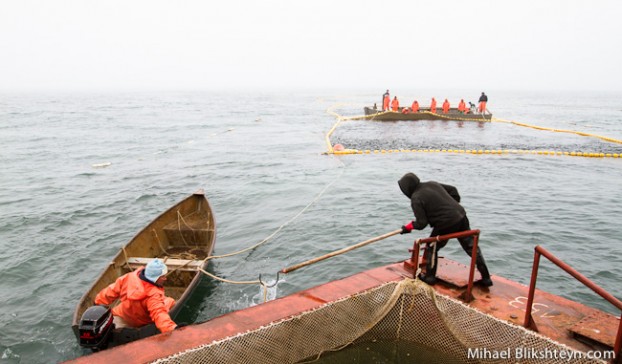
Just like in Alaska, the US Pacific Northwest and northern California, Pacific salmon are the keystone species to the Russian Far East. Unlike the Pacific Northwest, six species of salmon spawn in the Russian Far East. Masu, or cherry salmon, is the 6th species only found in the western Pacific Ocean along east Asia. Pink, chum and sockeye salmon are abundant and commercially important. With a strong global demand for Pacific salmon, and an increased interest in documented sustainably-caught salmon in Europe and the US, Russia has emerged as one of the last untapped frontiers for salmon fisheries.
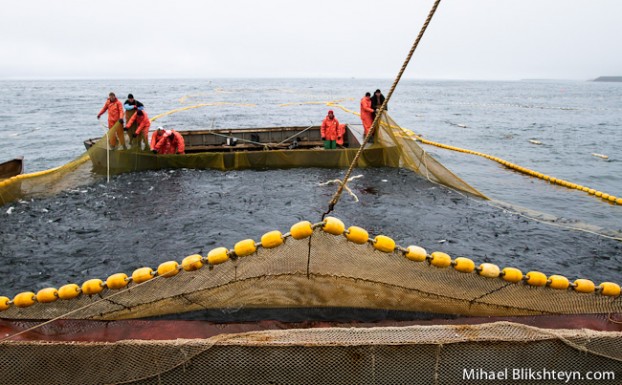
As a fishery biologist working for the Wild Salmon Center, I spent the past two summers on the Kamchatka Peninsula and Sakhalin Island in the Russian Far East working with Russian commercial salmon fishermen. A growing number of them are interested in having their fisheries Marine Stewardship Council (MSC) – certified. MSC is the leading and, arguably, the most stringent globally-recognized fishery certification program.
Over the next several weeks, I will be posting photos of coastal and in-river sockeye and pink salmon fisheries and fish processing on Kamchatka and Sakhalin, two eastern-most Russian provinces. I want to start with the coastal sockeye salmon fishery near the town of Ozernovsky (Ozernovskiy), at the southwestern tip of Kamchatka. Ozernaya River, which flows from the Kuril (Kurilskoe) Lake into the Sea of Okhotsk, supports the largest sockeye salmon population in Asia, rivaling that of Bristol Bay, Alaska.
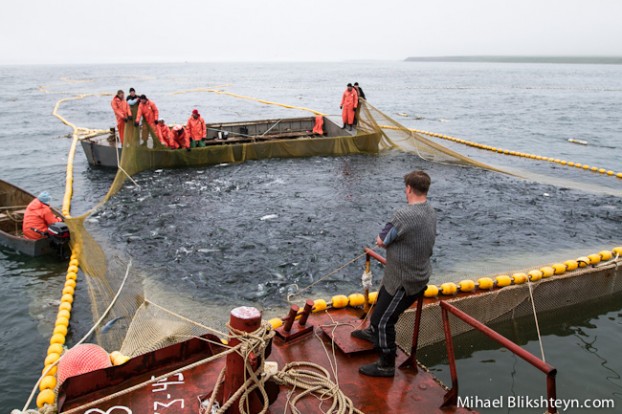
It is a pristine area, with the lake and its network of streams, where the sockeye salmon spawn, located in a well-guarded nature reserve. A fisheries management agency counts the number of returning salmon at a weir at the lake and declares fishing closures to achieve the desires number of spawners. Continuous patrolling along the river and around the lake prevents any significant poaching, a big problem in other parts of Russia.
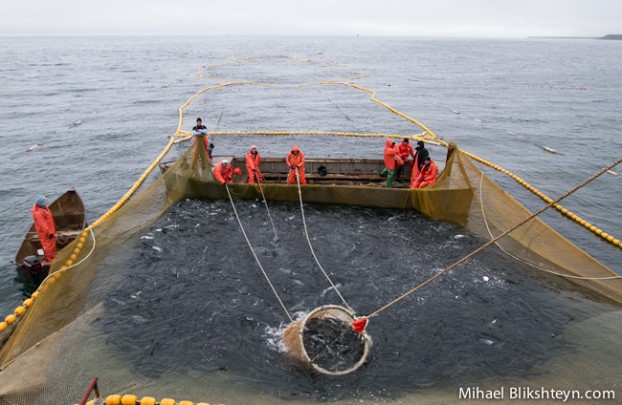
Several companies fish the Ozernaya River sockeye salmon in the river and on the coast. In September of 2012, one of the main companies there, Vityaz-Avto, became the first company to be MSC certified in Kamchatka and only the third to be certified in Russia.
Vityaz-Avto fishes for Ozernaya sockeye salmon both in the river and along the coast . Coastal salmon fishing in Kamchatka is done using passive stationary “set nets”. These are two-kilometer long traps nets that stretch from the shore. By regulation, they must be located a minimum of two kilometers away from river mouths.
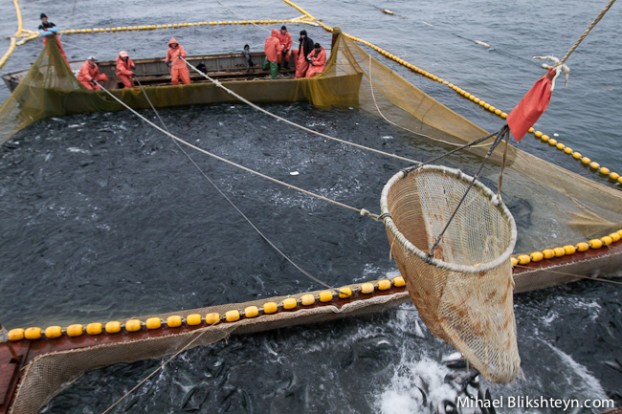
The set up consists of a two-kilometer long leading net set perpendicularly to the shore. One end is anchored on shore and the other, the off-shore end, leads to two symmetrical trap nets floating at the surface. They are stretched and anchored in one place by weights and the floats keep the top of the net at the surface. The traps have conical entrances that allow fish to enter but keep them from finding a way out. As salmon follow the coastline on their way to their natal spawning streams, they encounter the leading net which leads them into the traps. The traps are emptied daily using a “bailor” or a conical net that scoops the fish out of the trap into a “prorez“, an unpowered metal barge with a mesh netting that is towed by a boat to the processing plant on shore.
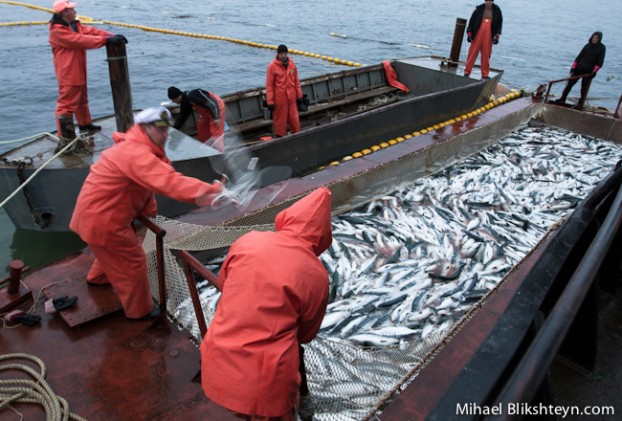
For more photos of this and other fisheries, please see the Photo Archive.
For more information about this fishery, read the WWF’s article “Conserving Kamchatka Salmon through Marine Stewardship Council Certification” and Wild Salmon Center’s “My month in Kamchatka as an independent fisheries expert“.